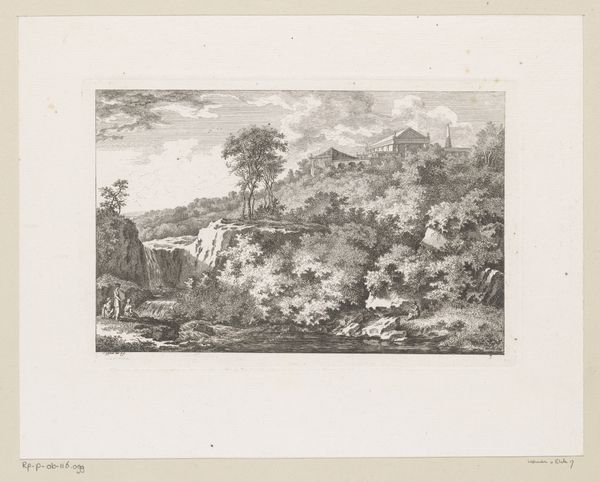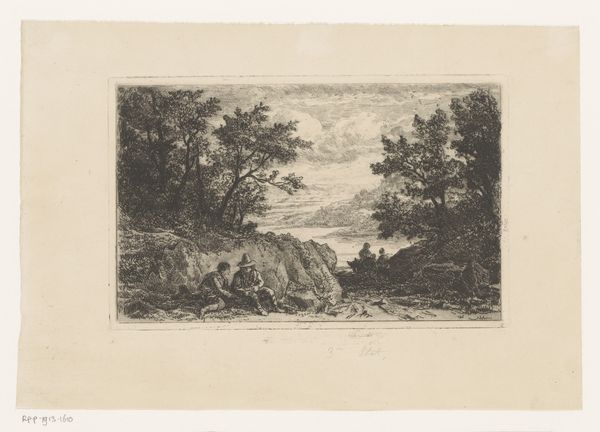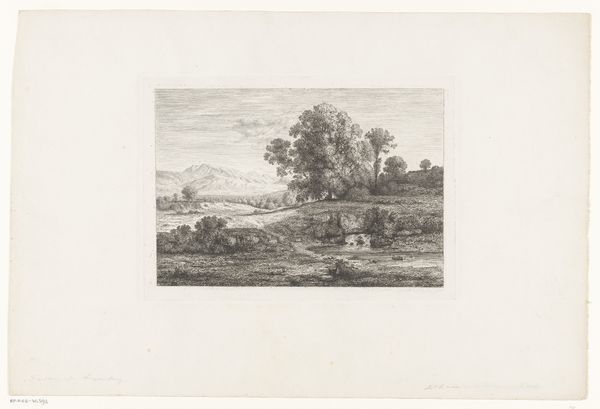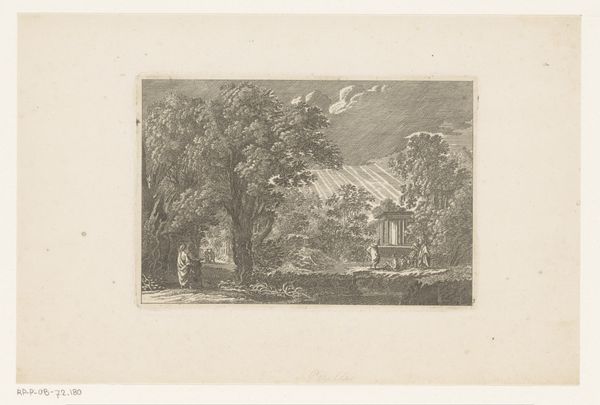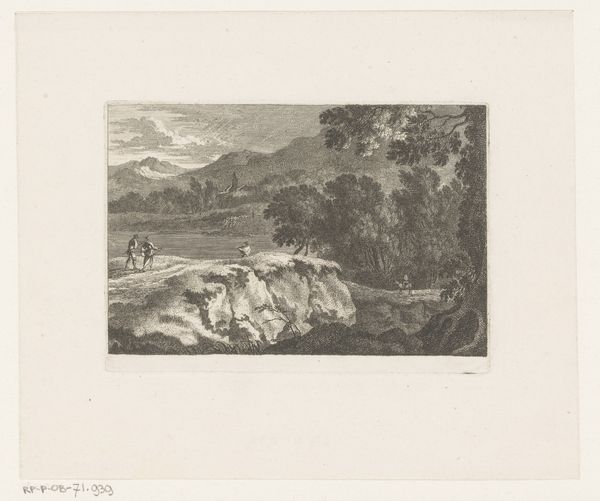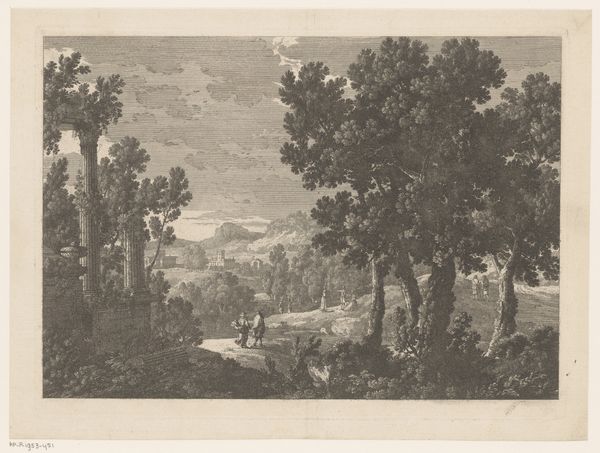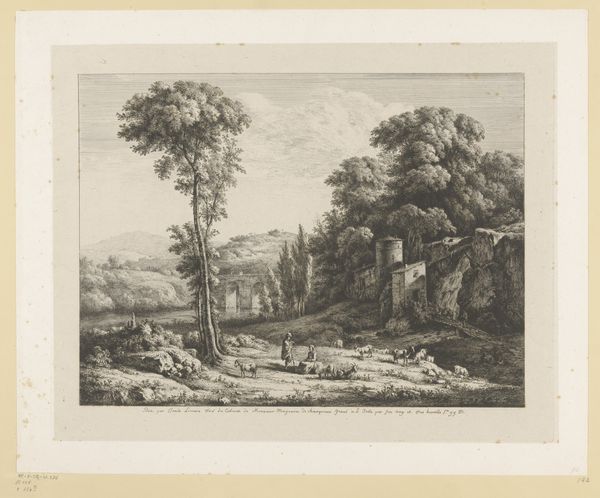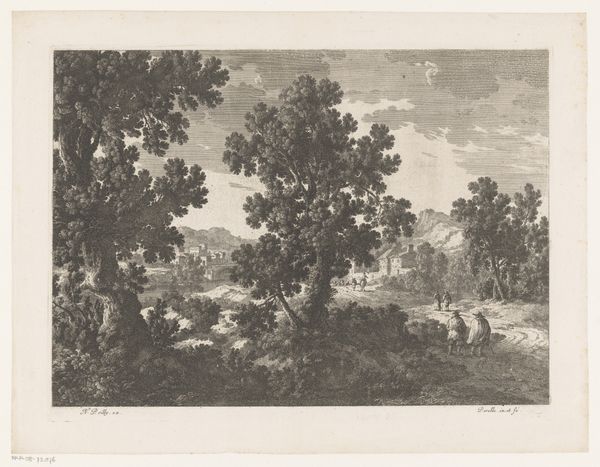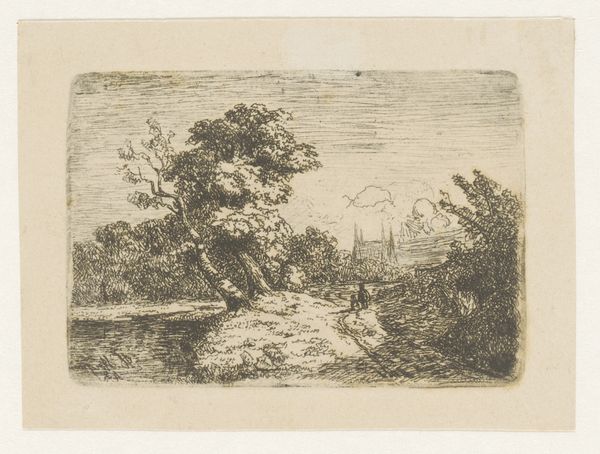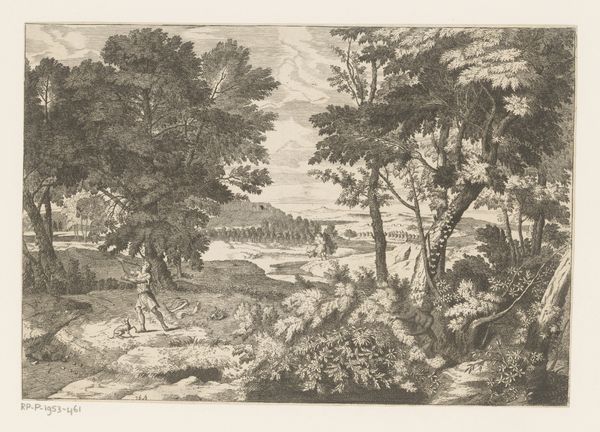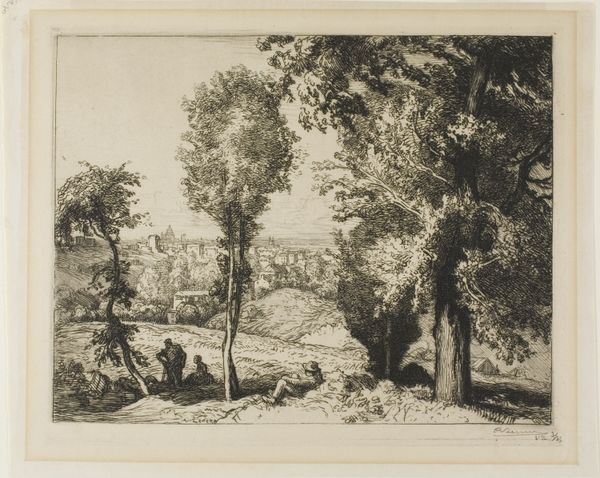
Italiaans landschap met een meer, een stad en twee vrouwen op de voorgrond 1817 - 1891
0:00
0:00
print, etching
# print
#
etching
#
landscape
#
figuration
#
pencil drawing
#
history-painting
#
italian-renaissance
Dimensions: height 119 mm, width 191 mm
Copyright: Rijks Museum: Open Domain
Editor: This is "Italiaans landschap met een meer, een stad en twee vrouwen op de voorgrond," an etching by Joseph Meganck, dating sometime between 1817 and 1891. It has such a quiet, understated feel to it. What draws your eye when you look at this piece? Curator: The composition is carefully orchestrated, isn't it? Note how the foreground elements, the rocks and figures, serve to frame the distant cityscape, creating a sense of depth. The contrast in textures—the rough, irregular strokes defining the rocks versus the more delicate hatching used to render the city—adds visual interest. What do you make of the two figures? Editor: I think they provide scale and bring a human element to this rather distant view. They almost seem like an audience positioned within the landscape. Curator: Precisely. Now, consider the use of light. The etcher skillfully manipulates light and shadow to create a sense of atmosphere. Observe the way light appears to gently illuminate the distant city, almost like a mirage. This effect draws the eye and emphasizes the separation between the earthly foreground and the more idealized cityscape. How would you interpret this distinction? Editor: Perhaps it represents a longing or aspiration for an idealized past? Or maybe the figures in the foreground are simply disconnected from the activity of the city in the distance. Curator: An astute observation. And consider the medium itself. The linear quality of the etching lends itself well to capturing the minute details of the landscape and the architectural structures, all within a unified whole. Editor: So, the meaning isn’t just in the subject matter but is built up from the formal elements themselves: line, light, texture, composition... Curator: Indeed. It’s in the interplay of these elements that we can begin to truly decode the artwork's significance. Editor: I learned so much from just observing the visual composition and its elements, not just searching for historical contexts! Curator: A successful etching such as this certainly provides fertile ground for formalist inquiry.
Comments
No comments
Be the first to comment and join the conversation on the ultimate creative platform.
